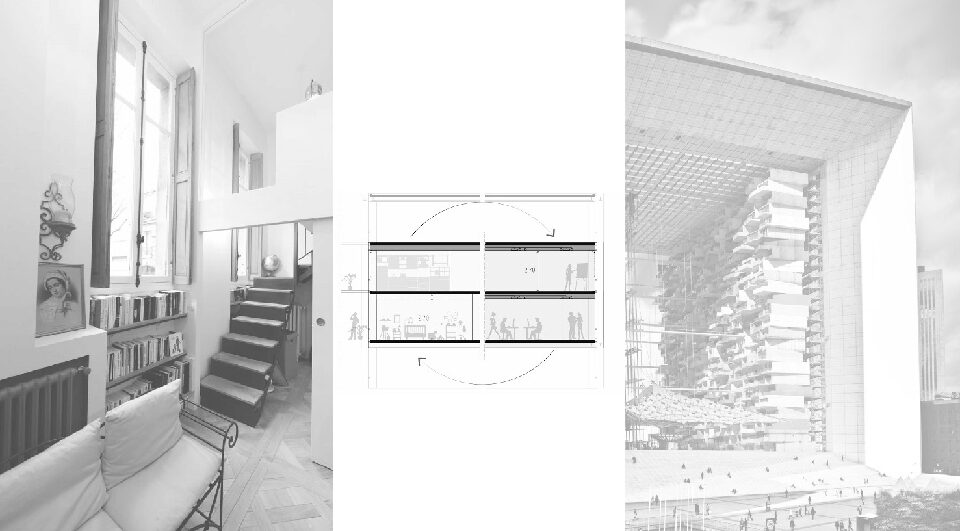Useful Height
Narrative

Right-hand illustration: Studio Malka: AUTO-DEFENSE Active Resistance Pocket
Height and Sobriety
Strictly from the point of view of sobriety (in terms of materials and energy but also economic), the height of buildings should be limited. In the age of labels and other energy-saving certifications such as France’s Bâtiment Basse Consommation (Low Consumption Building, or BBC), compact, thick, low-ceilinged buildings are usually favored—the standard 18-meter depth for commercial properties, 16-meter depth for residential.
If we take the lowest possible ceiling height as 2.50 m for a dwelling, it’s clear that to reach 2.80 m ceiling height, you’d have to pay for more materials. The energy required to cool/heat this extra space must also be added to the equation.
But height is also an important guarantee for usage performance. Those of you who have lived in or are fortunate enough to live in a home whose ceiling is slightly higher than the average know this all too well: well-programmed height allows natural light to enter further back and air to circulate more easily, which can have a significant impact on summer comfort. As we all know, warm air tends to gather at height: by rethinking window design and opting for vertical windows with an opening top section, it’s possible to create a natural ventilation system that helps renew and refresh the air without causing too much disturbance to the occupants, who are there to get on with their lives, not to spend half the time operating the cooling system. Not to mention that the dwelling should have cross ventilation...
The Virtue of Height
Ceiling height also has another essential virtue: it allows you to claim more space for yourself.
Let’s take the example of when you’ve finally succeeded in acquiring a one-bed apartment, perfectly suited to you and your partner, in a well-to-do and expensive city center. When you welcome your first child, it’s decision time, and there’s usually only two options to cope with your expanding family: either you have the funds to buy somewhere bigger in the same neighborhood, or you have to consider moving to a different residential area altogether. On the other hand, if you live in an apartment with a generous ceiling height, you have the third option of installing a mezzanine level, for example, allowing you to accommodate your new arrival. By converting a one-bed into a two- or even three-bed, you also gain time to adapt to life’s changes and deal with unforeseen events.
Height also offers the potential for reversibility, making it easier to change use—from residential to commercial, for example—as demonstrated by Haussmann-style tenement buildings, which can be easily converted without losing their identity.
Useful height is made possible by generous voids, which allow us to plan an inhabited space in the long term. And sobriety is another factor to consider in the long term...